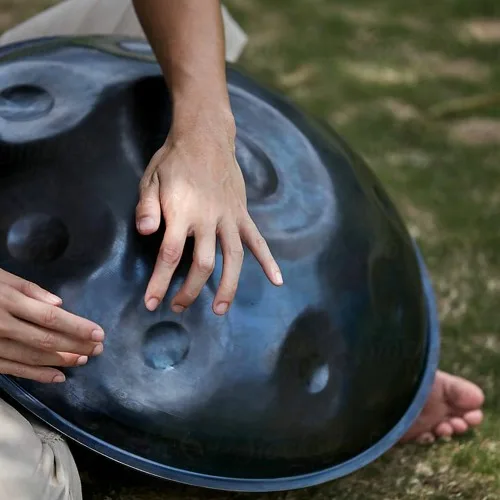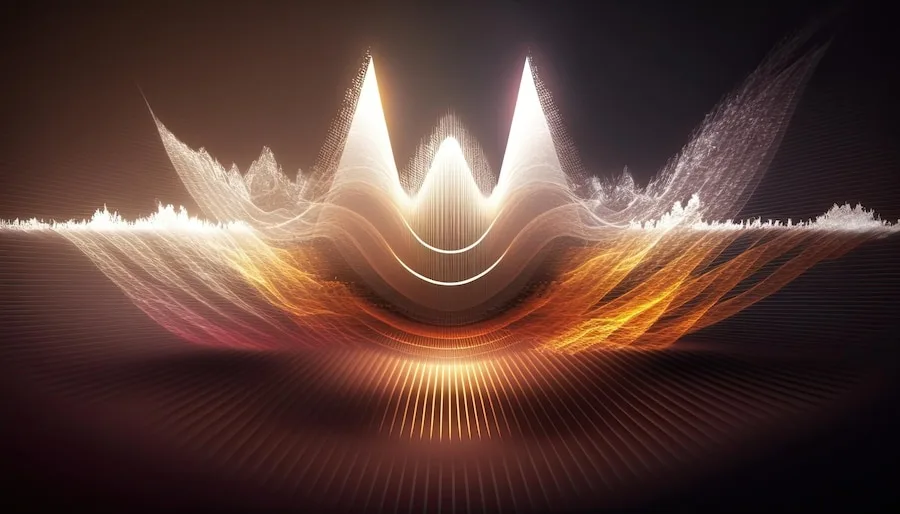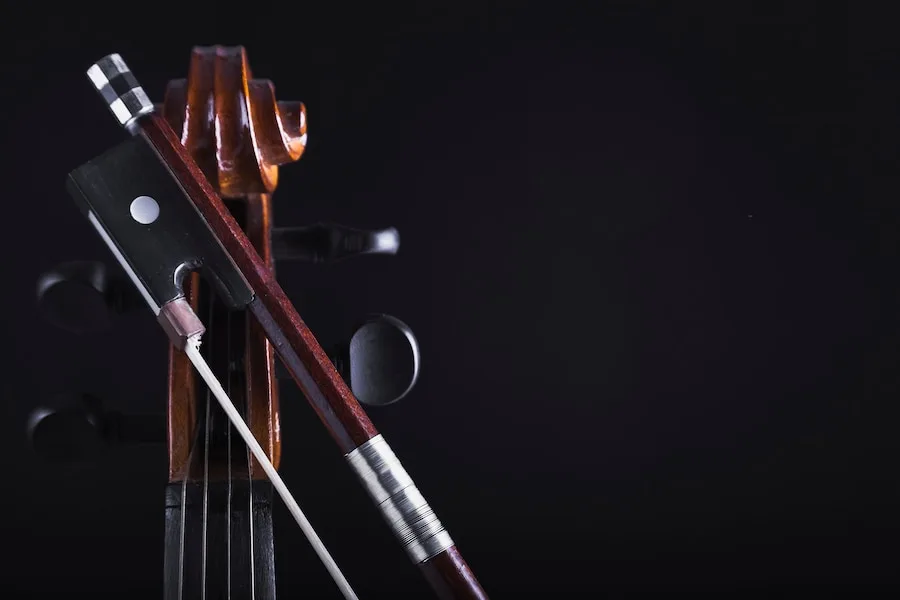Are you tired of the same old guitar and piano melodies? Do you yearn for the enchanting sounds of unique musical instruments that will transport you to unexplored musical realms? Well, you’re in for a treat! This article will delve into the fascinating world of unusual and captivating musical instruments you’ve probably never heard of. From the Hang Drum’s ethereal tones to the Theremin’s haunting sounds, we’ll explore these instruments‘ origins, how they produce their distinctive sounds and the talented musicians who have mastered them. So, let’s learn on this musical journey and discover some of the most extraordinary instruments that have graced our ears.
What Are Some Unique Musical Instruments?
Let’s kick off our exploration with a look at some remarkable instruments:
The Hang Drum

The Hang Drum, often mistaken for a UFO due to its unique shape, is a mesmerizing instrument with a celestial sound. This percussion instrument originated in Switzerland in the early 2000s, producing ethereal, bell-like tones. Played with the hands, the Hang Drum’s creators, Felix Rohner and Sabina Schärer, designed it to evoke a sense of tranquility and spirituality.
Historical Anecdote: Hang Drum’s creation was inspired by the steelpan and the ghatam, blending scientific precision with spiritual harmony.
Techniques and Scales: The Hang Drum employs various scales, including the pentatonic scale, requiring hand-drumming techniques to produce resonant overtones.
Notable Composition: One of the most famous compositions featuring the Hang Drum is “Hang Drum Solo” by Dante Bucci.
The Theremin
Have you ever dreamt of playing an instrument without actually touching it? The Theremin fulfills that dream. Invented by Léon Theremin in 1920, this electronic marvel is played by moving one’s hands near its antennas, manipulating electromagnetic fields to produce eerie, otherworldly sounds. It has found its place among sci-fi soundtracks and avant-garde music.
Historical Anecdote: Léon Theremin’s invention was initially intended for covert listening during the early 20th century.
Techniques and Scales: The Theremin requires precise hand movements to control pitch and volume, with a unique technique distinguishing it from traditional instruments.
Notable Composition: Clara Rockmore’s rendition of “The Swan” on the Theremin remains a classic in the instrument’s repertoire.
The Ondes Martenot
Developed in the 1920s by Maurice Martenot, the Ondes Martenot is an early electronic instrument that resembles a keyboard with a ribbon controller. Its haunting, theremin-like sound is reminiscent of a singing saw or a ghostly voice. The Ondes Martenot has been used in classical compositions and film scores, adding a unique, ethereal quality to the music.
Historical Anecdote: Maurice Martenot’s desire to expand musical expression beyond traditional instruments drove him to create the Ondes Martenot.
Techniques and Scales: The Ondes Martenot features a traditional keyboard, making it accessible to musicians familiar with piano techniques. It can cover various scales and has unique, expressive capabilities through the ribbon controller.
Notable Composition: Olivier Messiaen’s “Fête des belles eaux” showcases Ondes Martenot’s ethereal voice in a symphonic context.
The Glass Armonica
Benjamin Franklin invented the Glass Armonica in 1761. It’s a mesmerizing instrument comprising glass bowls or goblets of varying sizes placed on a spindle. Musicians create haunting, crystal-clear tones by touching the rotating glass with wet fingers. It was immensely popular in the 18th century, and Mozart and Beethoven even composed music.
Historical Anecdote: Benjamin Franklin was inspired by the musical properties of glass and created the Glass Armonica as a culmination of his scientific and musical interests.
Techniques and Scales: The Glass Armonica’s sound is determined by the size and thickness of the glass bowls, covering various scales and requiring delicate finger techniques.
Notable Composition: Mozart’s “Adagio and Rondo for Glass Harmonica” is a celebrated composition for this unique instrument.
The Hydraulophone
Water and music may not seem obvious, but the Hydraulophone proves otherwise. This instrument allows you to create melodies by covering and uncovering water jets. The sound is produced when water flows over small holes, creating a unique, soothing tone. It’s like playing music with liquid fingers!
Historical Anecdote: A Canadian inventor, Steve Mann, created the first Hydraulophone in the 1980s, driven by his fascination with water and music fusion.
Techniques and Tunes: The Hydraulophone’s melodies are created by manipulating water flow with finger movements, offering a novel approach to musical expression.
Notable Application: Hydraulophones have found use in interactive water installations, adding a sensory dimension to public spaces.
Now that we’ve uncovered some truly unique musical instruments let’s dive deeper into their mechanics and the incredible musicians who have embraced them.
The Mechanics of Unique Sound

Each instrument relies on ingenious mechanisms to produce unique and enchanting sounds. Let’s take a closer look at how they work.
Hang Drum Harmony
The Hang Drum consists of two hemispheres made of steel, carefully tuned to produce specific notes. When struck with the hands, the vibrations of the steel create resonant overtones, resulting in the instrument’s celestial sound. The player controls the pitch and tone by varying the force and location of their strikes, allowing for a wide range of melodic possibilities.
Theremin’s Electromagnetic Symphony
The Theremin operates on the principle of electromagnetic fields. It has two antennas – one controlling pitch and the other controlling volume. As a player moves their hands closer or farther from these antennas, it disrupts the electromagnetic fields, producing varying pitch and volume. The eerie, sci-fi-like sound results from manipulating these fields with precise hand movements.
Ondes Martenot’s Enigmatic Voice
The Ondes Martenot features a standard keyboard and a ribbon controller. The keyboard produces pitches, similar to a traditional instrument, while the ribbon controller modulates the sound’s timbre and intensity. A ring on the player’s index finger manipulates the ribbon, creating expressive and emotive sounds.
Glass Armonica’s Crystal Clarity
The Glass Armonica consists of glass bowls of varying sizes placed on a spindle. To play it, a musician touches the rotating glass with wet fingers, creating friction and vibrations that result in haunting, crystalline tones. The glass bowls’ size and thickness determine the notes’ pitch, allowing for various musical possibilities.
Hydraulophone’s Liquid Melodies
The Hydraulophone uses water jets to produce sound. Players covering and uncovering the jets with their fingers alter the water flow and create varying tones. The instrument’s underwater resonators enhance the sound, making it truly unique and immersive.
These intricate mechanisms showcase the ingenuity of instrument designers and the endless possibilities for musical expression. As we continue our journey into the world of unique musical instruments, we’ll explore the virtuosos who have mastered these captivating creations.
Virtuosos of these Unusual Instruments
Dante Bucci
Dante Bucci, a renowned Hang Drum player, once stated, “The Hang Drum’s unique tones allow me to create a sense of serenity and wonder that captivates audiences.” His mastery of this unique instrument has earned him a dedicated following, and his performances evoke a sense of serenity and wonder.
Clara Rockmore
Clara Rockmore, the pioneer of the Theremin, famously said, “The Theremin’s ethereal sounds offer limitless possibilities for musical expression, transcending traditional instruments.” Her virtuosity on the instrument remains unmatched. She brought the Theremin into the classical music world, performing with orchestras and demonstrating its potential as a serious instrument.
Thomas Bloch
A contemporary Ondes Martenot player, Thomas Bloch, has expressed, “The Ondes Martenot’s versatility and expressive capabilities continue to inspire modern composers and filmmakers.” He has expanded the instrument’s repertoire and collaborated with modern composers, showcasing Ondes Martenot’s unique qualities.
Dennis James
Dennis James, a world-renowned Glass Armonica player, has remarked, “The Glass Armonica’s haunting tones have a timeless appeal that resonates with audiences worldwide.” His classical and contemporary music performances on the Glass Armonica have enchanted audiences worldwide. He has also played a significant role in reviving interest in this historical instrument.
Steve Mann
Steve Mann, the creator of the Hydraulophone, has shared, “The Hydraulophone’s fusion of water and music opens up new dimensions of creativity for musicians.” He is not only an inventor but also a skilled musician. His innovative instrument has inspired musicians to explore the unique sounds of water, opening a new dimension of musical creativity.
These virtuosos have dedicated their lives to mastering these exceptional instruments, pushing the boundaries of what is possible in music. Their passion and expertise inspire us to appreciate the beauty of these unique musical creations.
Conclusion
Innovation knows no bounds in music, and these unique instruments are a testament to that spirit. From the enchanting melodies of the Hang Drum to the eerie, otherworldly tones of the Theremin, these instruments have captured the imaginations of musicians and audiences alike. The virtuosos who have mastered them have pushed the boundaries of musical expression, creating captivating compositions that defy convention.


